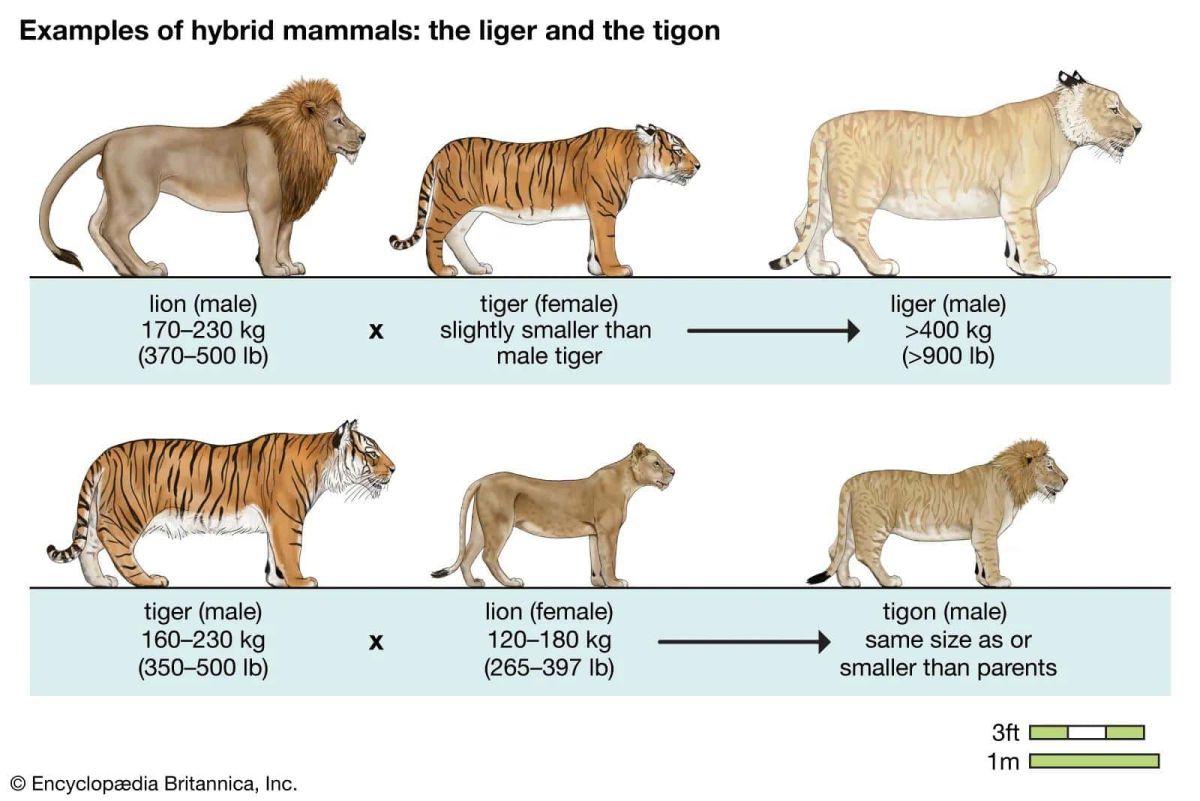The Fascinating Hybrids of Tigers and Lions: A Closer Look at Tigons and Ligers

In the animal kingdom, the intersections of species can yield some of the most remarkable and intriguing hybrids. Two of the largest and most majestic big cats—lions (Panthera leo) and tigers (Panthera tigris)—are often the focus of fascination due to their physical prowess and social behavior. When these two species mate, they produce hybrids known as ligers and tigons, each possessing unique characteristics and intriguing backgrounds.
Understanding the Hybrids
Ligers are the offspring of a male lion and a female tiger. Commonly larger than both parent species, ligers can weigh up to 1,000 pounds and grow to more than 12 feet long when standing on their hind legs. A striking combination, ligers exhibit features from both their parents; they often have a sandy or tawny coat with faint tiger stripes and the characteristic mane of a lion, though this is more prominent in males.
On the other hand, tigons are the result of a male tiger mating with a female lion. Generally smaller than ligers, tigons inherit a blend of physical characteristics that often lead to them being smaller in size than their lion and tiger parents. Their coats may display distinct stripes and spots, blending features of both parent species.
Characteristics and Behavior
Hybrids like ligers and tigons exhibit some fascinating traits. Ligers tend to be social and exhibit behaviors similar to lions, such as lounging in groups, while also showcasing the more solitary nature of tigers when it comes to hunting. On the contrary, tigons, being more akin to tigers in temperament, often display shyer behavior and enjoy more solitary activities.
One of the most intriguing aspects of these hybrids is their health. Due to the nature of hybrid vigor, ligers may display fewer genetic diseases than purebred lions or tigers. However, they’re also prone to health issues. Both ligers and tigons can suffer from complications associated with their size, such as joint problems and organ pressure, primarily due to rapid growth rates.
Rarity and Habitat
Breeding ligers and tigons has been primarily a result of human intervention. In nature, these hybrids would rarely surface due to the differing habitats and ranges of lions and tigers. Lions predominantly inhabit savannas and grasslands in Africa, while tigers roam through dense forests and tropical regions in Asia.
In captivity, these hybrids have gained popularity in zoos and wildlife sanctuaries, albeit groups with ethical considerations surrounding their breeding. The emphasis remains on educating the public about the importance of conservation for both parent species, rather than focusing solely on the mystique of their hybrids.
Conservation Implications
While hybrids may spark interest and wonder, it’s important to recognize the implications of breeding ligers and tigons. Conservationists generally argue that hybridization distracts from the vital needs facing endangered species. Tigers and lions, each facing their unique threats in the wild, are desperately in need of concerted conservation efforts. Protecting their natural habitats and ensuring their survival should take precedence over breeding hybrids.
Organizations focused on wildlife conservation urge people to appreciate and support the efforts directed towards saving the lion and tiger populations rather than indulging in novelty hybrids. The existence of ligers and tigons should serve as a reflection of the genetic diversity and potential of big cats, rather than a destination of fascination that overshadows the plight of their parents.
Conclusion
The fascination with ligers and tigons showcases the complexities of genetic inheritance and species interaction. These hybrids serve as a reminder of the beauty of nature’s infinite possibilities while underscoring the pressing need for conservation efforts. As stewards of the earth’s wildlife, it’s our duty to protect and preserve the natural habitats and populations of tigers, lions, and all species that call our planet home. By promoting awareness and understanding, we can ensure that the majestic legacy of these magnificent big cats endures for generations to come.



